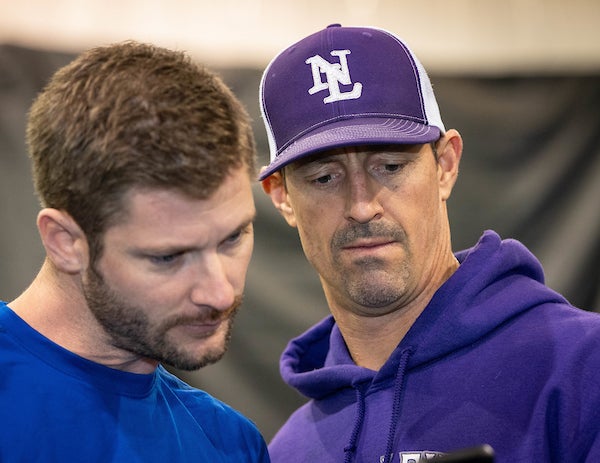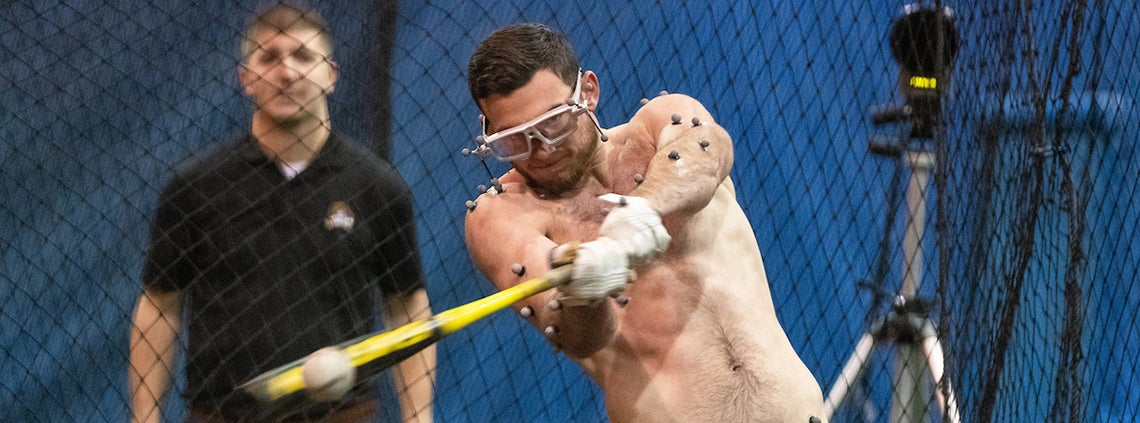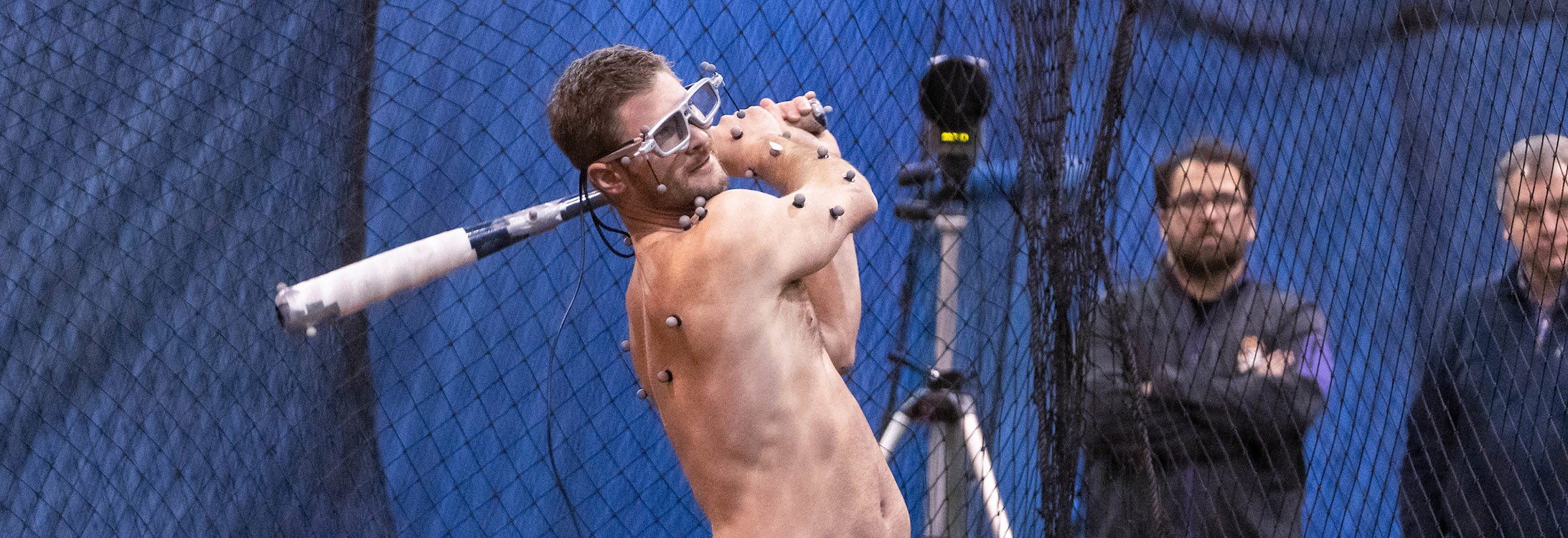BATTER UP!
Baseball study aims for better hitting
Eastern North Carolina is rich in baseball tradition, with a pair of Hall of Famers among its native sons.
That tradition could take a step forward through work researchers at East Carolina University are doing to better understand the science of hitting.
Specifically, they are focusing on what a hitter’s eyes see as a pitch is hurling toward them at upward of 100 miles per hour and how the brain processes that visual information and then instructs the body to swing.
Kinesiology faculty members Nick Murray and Patrick Rider are leading the study. Using motion-capture and eye-tracking technology, they and a group of students tested hitters in the fall at Next Level Training Center in Greenville. Test batters from high-school to semi-pro levels were fitted with dozens of sensors as well as special goggles to track their eye movements as they watched and then swung at pitches.
The goal, Rider said, is “understanding how hitters process that visual information and turn it into a swing.” That, in turn, could help players and coaches know what hitters see, how and why they react to it, and, ultimately, turn them into better players.
“You have a very short time to process what you’re seeing and hit that moving target,” said Rider, a teaching instructor and associate director of the ECU Performance Optimization Lab. He said their findings could lead to new drills or training methods.
Next Level owner Trent Britt agreed. “We’re excited because it’s one more way of looking at things,” said Britt, an ECU graduate who’s spent years as a Major League scout, coach and training expert. He also did the pitching for the study.

Martin and Next Level owner Trent Britt, an ECU alumnus, look over data from the study.
“We don’t really get an opportunity to see things from a scientific perspective and what the body is doing. This is one more set of data points,” Britt said. “This is the way sports and baseball are headed. Hitting and anything involving movement is very much an evolving science. It gives us a chance to question are we seeing what we think we’re seeing and help kids get better.”
Lance Martin, director of baseball instruction and baseball programming at Next Level, was one of the test subjects. He was an all-conference player at Mount Olive College.
“Once I started to figure out what the body is doing, in time and in space, I see things in a whole new light,” Martin said of participating in the study. “In turn, that could be used to help the hitter and also help pitchers get an advantage if they can understand that.”
Assisting with the research are doctoral student Chris Curran, who is a former college baseball pitcher; master’s students Ryan Silberg, Andy Jung and Nate Harris; and undergraduate Callie Herman.
In kinetics terms, hitting a baseball is what’s called an “interceptive task” – a motion that changes the course of a moving object.
“Baseball batting is a cognitively demanding interceptive timing task that requires precision and power,” said Murray, an associate professor and director of the Visual Motor Lab. Previous research has shown expert hitters have a greater ability to spot a moving object, but little research has connected that ability with head position and motor control. “And the fact we’re studying eye-tracking during a realistic at-bat – that is, using a pitcher instead of a machine – makes this study unique.”
If Murray and eye-tracking sound familiar, they should. In 2017, he and kinesiology faculty member Chris Mizelle studied golfers’ eye movements while putting. They’ve presented that research and are in the process of publishing it, Murray said.

ECU club baseball player Andrew Monroe hits a ball as doctoral student Chris Curran observes.
